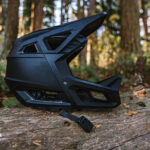I’ve spent years cycling on bikes that were far from ideal, whether they were the wrong size or barely functional. From crossing the Andes on a shaman’s son’s $50 bike to navigating Costa Rica on a Craigslist find with a bent rim, and even mountain commutes on a saddle that shredded my shorts, I’ve learned firsthand about bike fit and saddle woes.
My experiences weren’t with fancy, high-end gear, but they did cultivate a knack for problem-solving and a persistent spirit of adventure on any bike that could roll. Like many women cyclists, I used to accept saddle pain as part of the ride. It wasn’t until recently that I discovered a saddle and riding position that truly worked for me, leading to a revelation: “Ohhhhhhh … oh I seeeeee … “
Here’s the crucial point: when you cycle, your vulva—your crotch, your lady parts—should not be in pain.
Some initial soreness is normal, especially for new cyclists or long rides. (Sitting on anything firm for extended periods can cause soreness.) However, persistent, sharp pain and swelling in your sensitive tissues are not normal. Cycling should not cause this kind of pain. If it does, it’s a signal that you need to address your saddle adjustment and saddle choice.
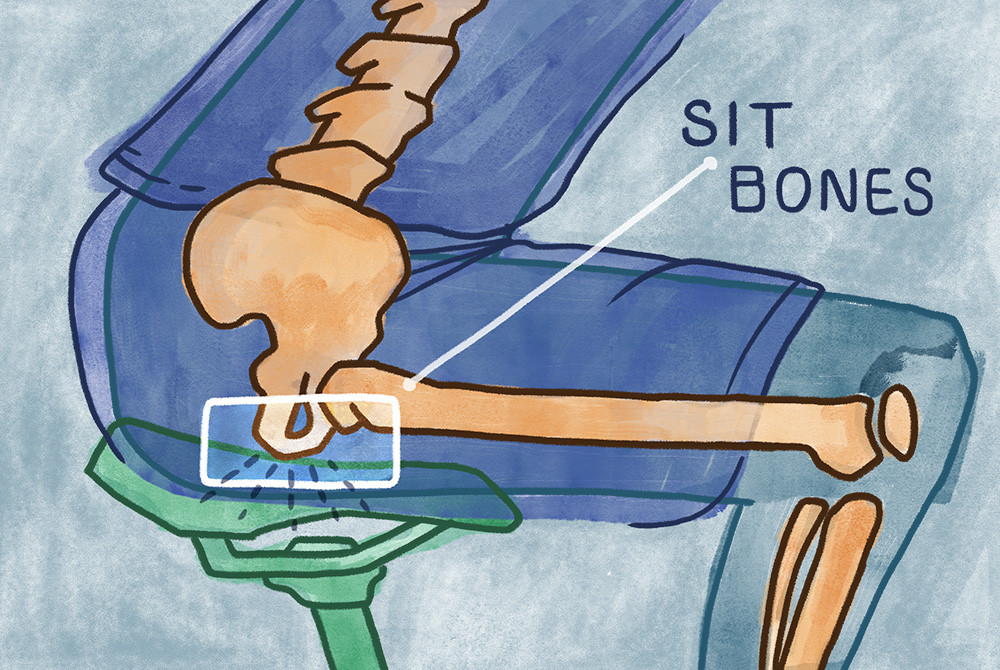 Illustration of sit bones placement on a bicycle saddle
Illustration of sit bones placement on a bicycle saddle
Your sit bones, located at the base of your pelvis, are meant to bear your weight when cycling.
The Crotch Conundrum: Why Cycling Can Cause Pain
For women, crotch pain during cycling often stems from excessive pressure on the delicate tissues of the vulva. When you sit on a bike saddle, your weight distribution should primarily be on your sit bones—the two bony prominences at the base of your pelvis. If too much weight presses directly on the vulva (the labia and surrounding area), it can lead to pain, swelling, or numbness in these sensitive tissues.
This excessive pressure on the vulva is frequently due to incorrect saddle adjustments like height, tilt, and fore/aft positioning. It can also arise from a poor overall bike fit or choosing an unsuitable saddle. It’s important to understand that there’s no universal “correct” setup. Proper adjustment is about tailoring the bike to your unique body and riding style. It’s all about how you feel while you ride.
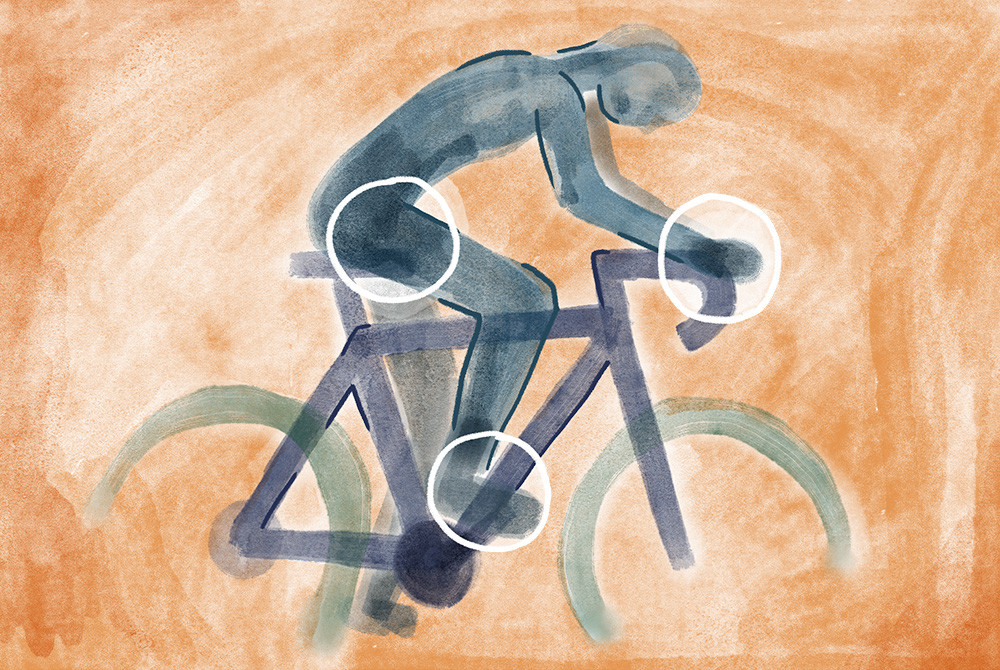 Illustration of the three main contact points on a bicycle: hands, sit bones on saddle, and feet on pedals
Illustration of the three main contact points on a bicycle: hands, sit bones on saddle, and feet on pedals
Saddle height significantly influences the balance across these three contact points.
Saddle Adjustment: Height for Balanced Cycling
Saddle height plays a critical role in distributing your weight across the three primary contact points: your feet, your hands, and your crotch. An improperly set saddle height, whether too low or too high, can shift weight away from your feet or hands and directly onto your crotch. Generally, you should aim for a slight bend in your knee when your leg is fully extended at the bottom of the pedal stroke. Make small adjustments to your saddle height until you achieve a balanced weight distribution among these three points while riding.
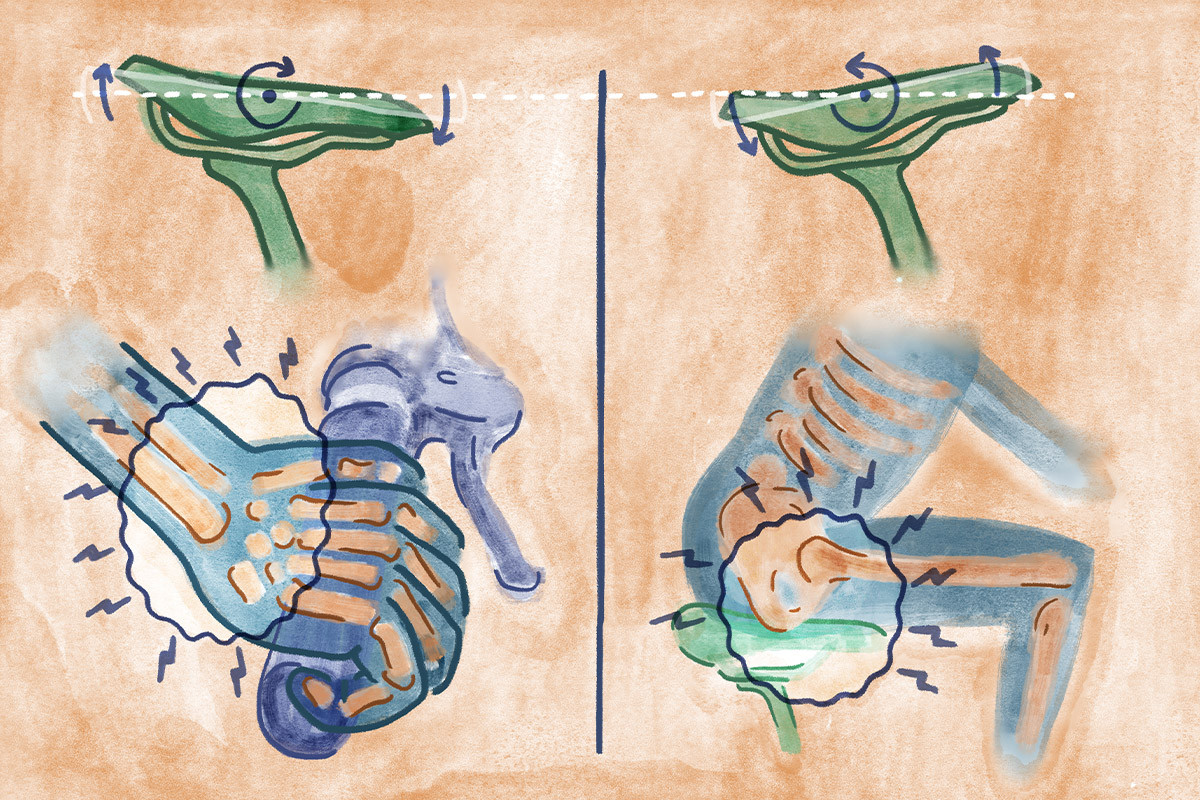 Illustration depicting the impact of incorrect bicycle saddle tilt, showing both upward and downward tilting
Illustration depicting the impact of incorrect bicycle saddle tilt, showing both upward and downward tilting
Incorrect saddle tilt can quickly lead to discomfort and pain.
Saddle Adjustment: Tilt for Optimal Comfort
Start by setting your saddle to a neutral tilt position, ensuring the nose is neither significantly pointed upwards nor downwards. An upward-pointing nose can dig into your soft tissues, while a downward tilt may cause you to slide forward onto the narrower part of the saddle. A downward tilt can also place excessive pressure on your hands, potentially causing wrist pain.
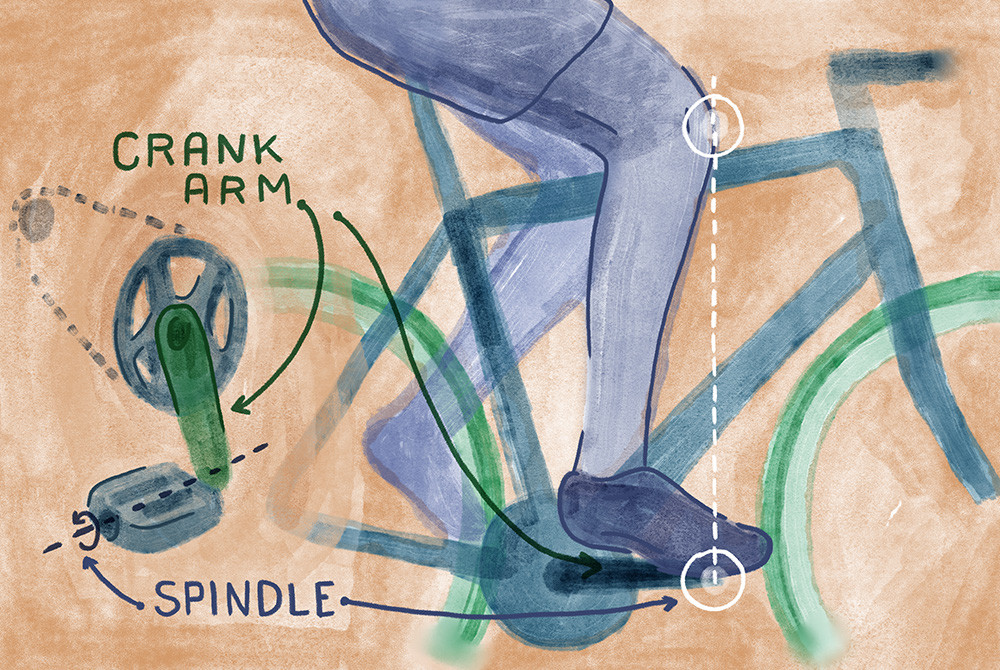 Illustration demonstrating the plumb bob method for setting the fore-aft position of a bicycle saddle, focusing on kneecap and pedal spindle alignment
Illustration demonstrating the plumb bob method for setting the fore-aft position of a bicycle saddle, focusing on kneecap and pedal spindle alignment
Check your kneecap and pedal spindle alignment to find a good fore-aft saddle position.
Saddle Adjustment: Fore/Aft for Efficient Pedaling
Generally, when you pedal forward to a position where the crank arm (the metal piece connecting the pedal to the bike) is horizontal to the ground, your kneecap should align directly above the pedal spindle (the central axis of your pedal).
You can check this alignment by placing your bike on a level surface and using a plumb bob to drop a vertical line from your kneecap to the pedal spindle. While some cyclists swear by this method, it can be a bit fiddly.
For beginners, the key takeaway is that the fore/aft saddle position is adjustable and affects both saddle comfort and overall bike fit. If you’re unsure where to start, position the saddle in the middle of its adjustment range and make minor adjustments from there to find your sweet spot.
Bike Fit: The Holistic Approach to Cycling Comfort
The human body is an amazing piece of engineering, and so is the bicycle. However, bodies and bikes come in a vast range of shapes and sizes. Saddle adjustment is always relative to the other bike components, and the entire bike setup needs to be tailored to your individual body.
If you’ve meticulously adjusted your saddle and still experience discomfort, the issue might stem from a broader bike fit problem. For instance, the bike frame might be the wrong size—either too large or too small—or your handlebars might need repositioning. In such cases, consider a professional bike fit assessment at a bike shop or by a physical therapist specializing in cycling.
Saddle Sores: What They Are and How to Prevent Them
Saddle Selection: Finding Your Perfect Seat for Biking
Ideally, after fine-tuning your saddle adjustments and bike fit, you should hop back on your bike and exclaim, “Ohhhhhh … oh, I seeee! This feels great!” But if you’ve addressed these aspects and cycling remains a pain in the crotch, it might be time to explore different saddle options.
Investing in a new saddle might be the solution. A common challenge for women is that most standard bike saddles are designed with male anatomy in mind. Women typically have wider sit bones than men, often requiring slightly wider saddles. Fortunately, there are now saddles specifically designed for women’s anatomy available in the market.
Given the wide variation in individual body shapes, saddle preference is highly personal. A saddle that’s perfect for your friend might not work for you at all. The best approach is to try out several different saddles before committing to a purchase, and see what truly feels comfortable for you.
Saddle Swap: Guide to a Good Fit
Getting Back in the Saddle: Stories of Resilience
While researching this article, I spoke with fellow adventure cyclists about their saddle adjustment experiences and pain. Some have been fortunate to never encounter issues, while others shared stories of various saddle-related dramas.
Kara de los Reyes recounted touring England on a worn-out secondhand saddle that would flip upwards every time she shifted her weight.
Bikepacker Pepper Cook shared an experience of replacing her broken-in Brooks saddle with a new one just before a bike tour. The new, un-broken-in saddle sat higher, disrupting her entire bike fit.
Hillary Goulet described an incident where she “smashed her clitoris” braking suddenly on a bike that was too large for her.
Despite these often uncomfortable and painful experiences, these women approached their situations with humor and a willingness to adapt, get back on their bikes, and try again. This resilience truly embodies the spirit of cycling.
Cycling endurance should not be about enduring unnecessary pain. If cycling becomes a pain in the crotch, remember that it’s a solvable problem. It might be a quick fix or require some time and experimentation, but your body will thank you for prioritizing comfort.

